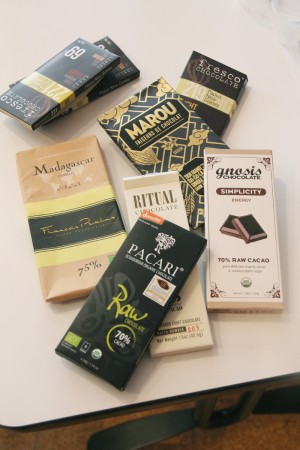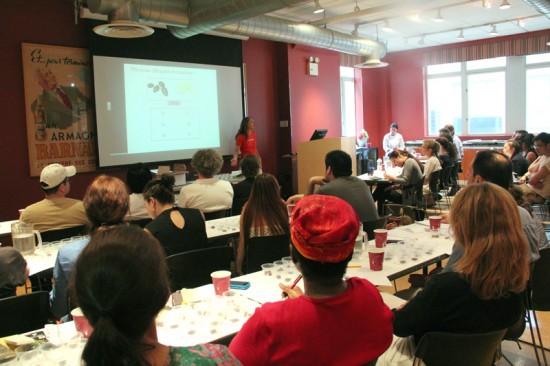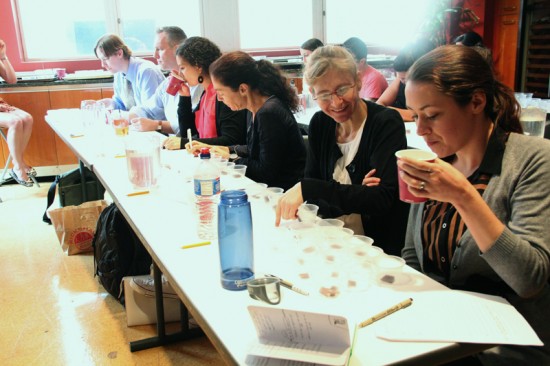Trends in Chocolate with Chloe Doutre-Roussel
Everybody loves chocolate, but what do we actually know about one of the world’s most popular sweets? At a lecture with world-renowned expert Chloe Doutre-Roussel, ICE students, alumni, and industry professionals had the chance to refine both their palates and their understanding of contemporary trends in chocolate.

To start, Roussel clarified that she was discussing fine chocolate—not candy bars, bon-bons or other treats which contain shockingly little actual chocolate. Until very recently, chocolate was available in white, milk and dark with very little information on the label, but over the last 10 years, the industry has changed dramatically.
The first change was that chocolate makers decided to emulate the labels of fine wine, listing the beans' country of origin and producing single-origin bars with distinct flavor profiles. But even then, very few chocolatiers actually made their own chocolate; rather, then would blending purchased chocolate and re-label it. It was actually in the United States that a movement called "bean-to-bar" was launched, where beans are curated and purchased abroad but roasted, processed, blended and packed by the producers. This movement has since been defined by the production of (usually) single-origin beans, processed delicately in micro-batches by entrepreneurs such as Rogue and Mast Brothers. (Interestingly enough, Rick Mast of Mast Bros is an ICE alum!)

While the quality of chocolate has increased with this movement, so was the breadth of the market, making the purchase of chocolate bars a confusing task for consumers. The generation of new labels has produced claims including Fair Trade, Organic or Raw. While these labels may hold a specific meaning, they don't speak to the level of quality of the product. meaning a $10 bar of chocolate might still be poorly made. In fact, Roussel argued that the Fair Trade label may distract conscious consumers from quality, allowing a mediocre product to sell for a higher price—potentially overshadowing exceptional bars produced with well-grown beans that boast no special labeling. To explore this argument, Roussel hosted a blind tasting, helping attendees discern their favorite chocolates, free of the bias of pretty packaging and distracting labeling.

Attendees discussed and tasted 15 chocolates from around the world, all around 70% cocoa, which allows the true chocolate flavor notes to shine. (70% actually means that a bar is 70% cocoa solid and butter, 30% sugar. It does not, however, specify the proportion of cocoa solid/butter, allowing producers a significant amount of leeway and variation.) Much like wine, such side-by-side tastings allowed us to discover a world of remarkably nuanced flavors. For example, some chocolates displayed a distinctive smoky taste, while others were bright and floral. Our students left with a newfound appreciation for fine chocolate, and I'm sure we'll all think twice when choosing bars to buy in the future.


Add new comment